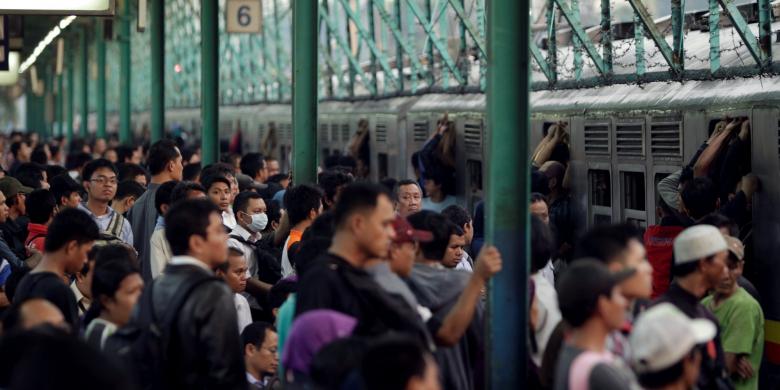
As you travel through life and across the Earth, some things stick
with you, and some things are lost. I lived and worked in Boston for
two years and can't remember a single street name. I studied at
Cornell for four years and can't remember the names of buildings I
visited every day. But I remember this instant vividly, and think
about it frequently. It has become a part of me.
I'd traveled to Indonesia alone, and had landed only hours ago,
toting nothing but a huge, wheeled trunk carrying my belongings, and a
camper's backpack with the rest. I spoke good Bahasa Indonesia
but was a fish out of water otherwise: disoriented, traveling for the
first time ever, and in a country so non-Western as to be totally
confusing in ways you'd never experience on your first excursion to a
place like Spain. I'd gotten myself from the airport to the train
station only to be told I couldn't travel with the trunk, which was
too heavy and would block the aisle.1 They gave me the
address of a freight forwarder, and suggested I take the Jakarta inner
city rail across town to get there. OK ...
Continue reading "The Jakarta Train"
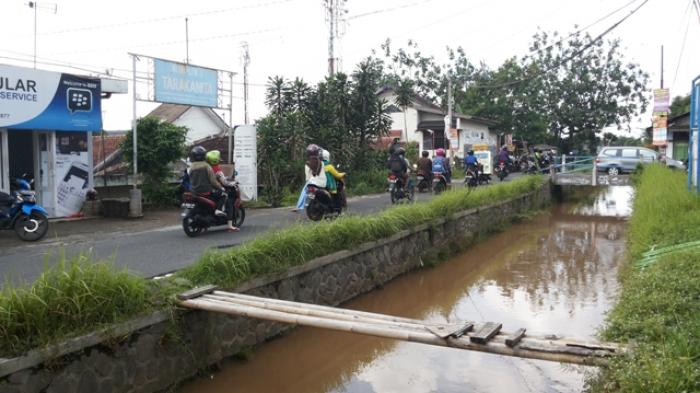
Our daily routine was lovely, and changed little over the year: the classes we taught started in mid- and late-afternoon, and therefore sometime after a casual morning of reading, preparing lessons, or running errands and exploring, it was time to make the commute to school.
That meant saddling up our bikes and riding the sandy, back roads from Pogung Baru on the outer limits of "urban" Yogyakarta down through the villages and rice paddies of Central Java to school. It was one hell of a ride, and before long we knew the longest route possible that permitted us to avoid the hectic and slightly dangerous traffic of Jalan Kaliurang. When we rejoined the highway and turned our bikes eastward towards central Yoyyakarta, it was when we'd reached the Selokang.
No other feature on our route was as much a topic of conversation.
Continue reading "The Selokang of Yogyakarta"
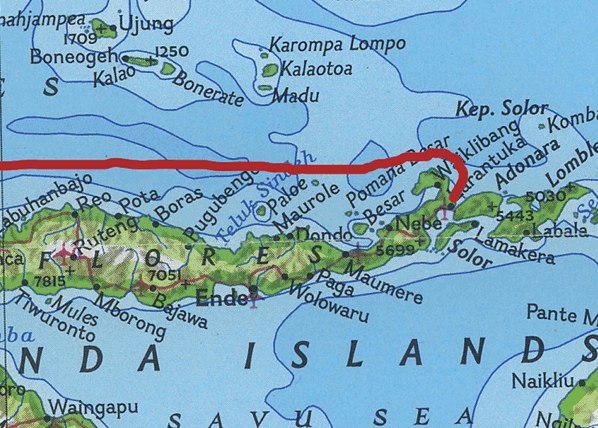
August, 1993:For weeks I'd traveled eastward across Java, Bali, and the Lesser Sunda Islands. But it was time to head back to Java to begin work and an adventure of a different sort. Evaluating my choices from rural, remote Larantuka, Flores, my options were stark: the next Pelni ship wouldn't reach Surabaya until far too late, and getting there sooner meant retracing my steps across dozens of long bus rides. Wandering around the port town I made a friend in a young Flores teenager interested in practicing his English with me, and as I described to him in Bahasa my predicament, he proposed what was soon to become one of my best adventures ever, unsurpassed on three continents. "Because we are friends," he explained, "and I want you to be alright."
Down in Larantuka's busy port, a tramp steamer bound westward through the Flores Sea for Surabaya was planning to slip its mooring later that night. Gusty, his older brother, and I located the captain and struck a deal. The K.M. Nagimulia – about a hundred and twenty feet along the water line and looking well-loved but well-worn – was off with a load of copra, plus a few bits of miscellany like a beat-up old car. Another bit of miscellany was me: a young adventurer bearing nothing but a sun-bleached backpack, a journal and pen, and a paperback or two. Money exchanged hands, muffled conversations settled the terms and conditions, one of which was clearly the fact that my presence on board would go unreported, and I'd stay out of sight when necessary. Later, when a customs inspector saw me, I noticed more money exchanging hands. We departed on the eighth of August, not long after sunset, to cries of "bebas mereka!" ("we're free of them!") and before long the harbor had slipped below the horizon and we were headed westward in unruffled seas.
Continue reading "By Tramp Freighter Across the Lower Sundas"
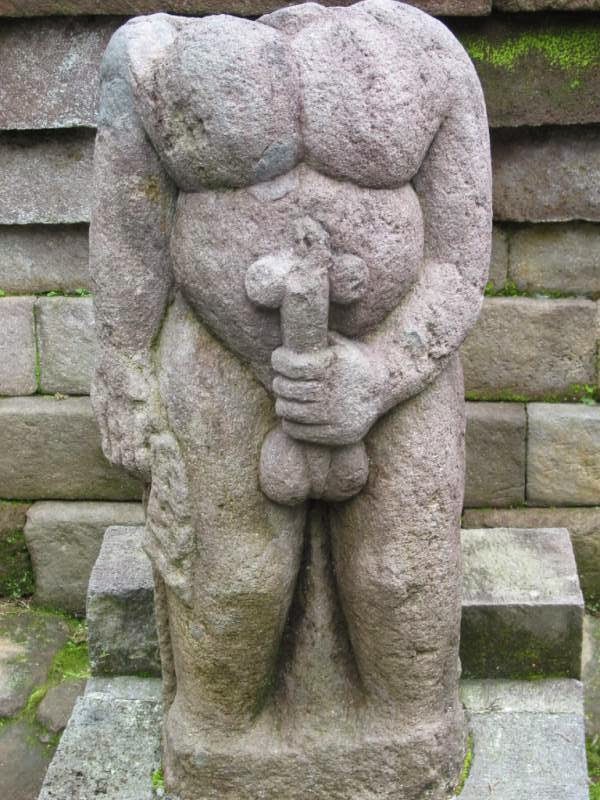
Sheathed in forest on the middle slopes of Java’s Mount Lawu was a 15th century Hindu temple by the name of Candi Sukuh. Carrying only the backpack that had taken me across the Pacific and down half the length of Indonesia’s most densely populated island, I eschewed a 1000 Rupiah motocycle ride and began the long hike to the top. Bad Idea: it was exhausting, and even my “perfect travel bag” remained too over-packed: I was still learning how best to travel. But, it was also a Good Idea: I evaded the rest of the travelers and spent the walk amongst friendly Javanese. This is why we leave home, after all. I helped one old woman carry her things from the pasar (market), and some young women sitting coyly at roadside on a low wall of volcanic rock taught me the Javanese “sukueng siang” greeting, a near equivalent to the Bahasa I’d studied. I'd only been in Java a few days, but upon departing Yogyakarta in the direction of Surakarta, the adventures were already piling up.
Continue reading "The Hike from Candi Sukuh"
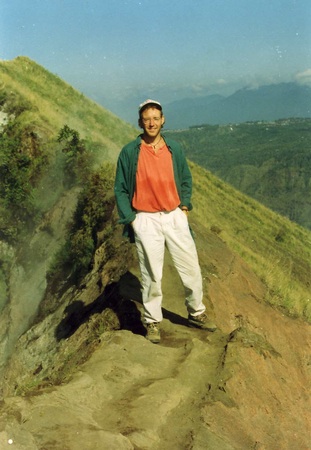
Making my way around the south of Bali I came to to fishing port of Padangbai, looking for someplace cheap to stay. A block away from the water, I found a little place striving for excellence. They showed me some fancier rooms going for 10,000 rupiah each – more than I’d spent to travel there, and more than I wanted to pay. But when I asked for something simpler they took me up to the second story to something more charismatic and far cheaper, and that’s where I stayed. It was a simple room with wide planked wooden floors well-trodden, windows overlooking the harbor, a single bulb, and just the hint of a smell of creosote from the shipyard next door.
After a simple dinner I crawled out onto the balcony with some candles, my notebook, a fountain pen. There was an oil lantern hanging from the roof and I lit it and watched as the moon rose over the Lombok strait. It was possible to travel more comfortably than this, I thought to myself, but impossible to travel more happily. With the exception of a sailor’s marlinspike knife in my pocket, everything I wanted in the world was in my bag, and nowhere on earth would have suited me more than where I was.
Continue reading "Stars over the bay, sunrise over the crater"
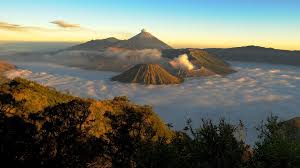
Late October, 1993, and a perfect day for traveling. Jamie and I struck forth on a train to Eastern Java. Malang had a a particular appeal to me, being the home town of the woman who had taught me Indonesian the summer of 1991, and I was happy to go visit her.
Afterwards, we took a bus north to Pasururan and then another to Parasen. Not easily, either! We were annoyed more than once by mysterious money deals happening in our presence, bad information, price changes, and the usual lot of the foreign traveler in places where prices are suggestions and formed on the basis of need and expectation. But the last leg of the trip was spectacular: by motorcycle up the hills through a Tolkienesque forest to the mountain town of Wonokitri. Hill after hill was surprisingly farmed right up to the peak, and deep cut valleys of stone esplanades unfurled before us. The tree tops formed a leafy canopy over our heads as the afternoon sun set over our left shoulders. The air chilled in that delightful way only altitude in the tropics can arrange, and as the road thinned and finally sputtered out the foliage melted into pines.
Continue reading "Wonokitri, the Tenggu people, and Mt. Bromo"
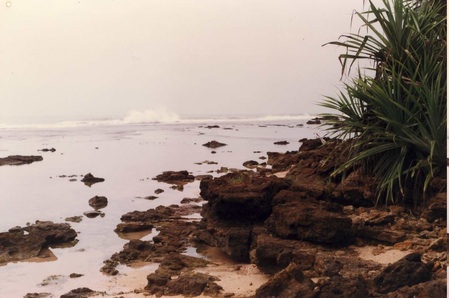
It’s not much more than a thick hook of land tucked under Java’s jaw, located a couple of hundred kilometers south of Jakarta. But it’s within striking distance of the infamous Krakatoa island volcano, and it was a compelling destination and a journey representative of most of the trips I made in Indonesia.
First, you had to get a pass to enter the Ujung Kulon park, since it’s technically a national reserve. Then you had to hire a guide at whatever price you negotiated. Then the guide takes you to the corner store so you can stock up on food for both you and reminds you that you are required to buy him a couple packs of kretek clove cigarettes, too. Wait, what’s the deal, here? Then you set off to hike.
Continue reading "Ujung Kulon"
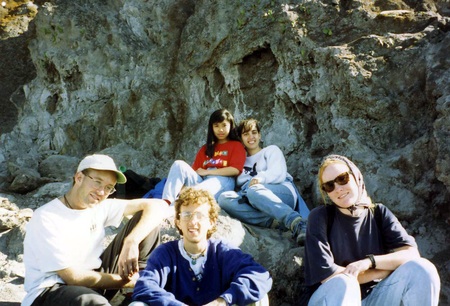
We were four friends: teachers gathered from all over the United States in order to teach at the Universitas Atma Jaya in Yogyakarta, Indonesia. And despite differing backgrounds and differing personalities, we all got along with each other so well we were able to share a few adventures together. Scaling Mount Merapi was one of them.
At 2950m, Mount Merapi (“the mountain that blows fire”) is one hell of a volcanic peak, and though it was calm other than the occasional rumble the entire time I lived in Indonesia, it erupted five months after I left Indonesia. It has gone on to blow its top several times since then, destroyed dozens of villages and hundreds of lives, and generally lived up to its name: eruptions in 2006 and 2010 killed hundreds and displaced hundreds of thousands. It's essentially in a state of continuous eruption or activity. During the two years I’d learned about Indonesia and studied Bahasa, I’d come to understand Indonesians almost without exception are born, live, and die within sight of a volcano. Merapi, which dominates the northern skyline of Yogyakarta, would be mine in 1993 and 1994.
Continue reading "Kaliurang and Merapi"
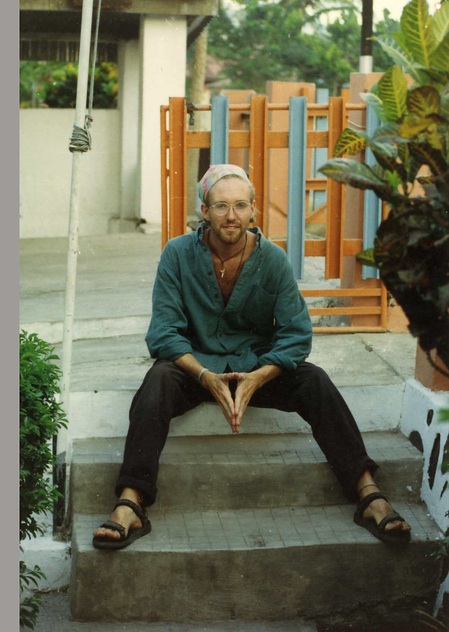
Five hundred years ago the people of Bima, Sumbawa grew crops in volcanic soil, built small fishing boats out of hard wood, and traversed the Indonesian archipelago under lateen sail in search of fish. In 1993 when I visited them, they still did. Sumbawa is fascinating, lying at a "transitional point between the Indianized 'high' cultures of Western Indonesia and the traditional pagan cultures of eastern Indonesia."
I had traveled eastward down the Nusa Tenggara from Jakarta, crossing Java, Bali, and Lombok, and in Bima I was interested in boat schedules for a Pelni ship that would take me back west to where a job and my next adventure awaited me. But Sumbawa was too good to resist - even the name was delicious on the tongue. Sumbawa is rough, rumpled, mountainous, and in 1993 at least it was delightfully untouristed. From bus windows I saw not entreaties for foreign visitors but simply farmers and fishermen doing what they’d always done. The hillsides looked wild, untamed, even unused. The hillsides drew my eyes most easily: steep and parched, draped over the higher summits by dark clouds that seemed unwilling to shed their watery loads. It was no wonder people turned to the sea. Drawing on my own experience in small boats on the Eastern seaboard, Sumbawa’s rumpled coastline looked like a paradise for a small, maritime gunkholer like myself. But Sumbawa was full of fragant sapan and sandalwood timber too, as well as tobacco and lots of grains.
Continue reading "Market Night in Bima, Sumbawa"
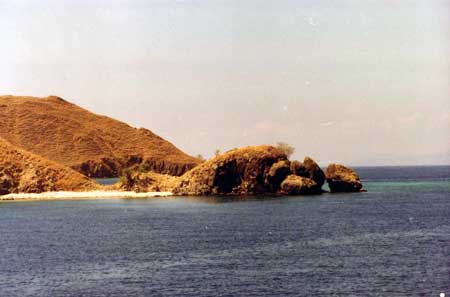
July 1993: The ferry from Bali slipped from the dock just after noon, under a bright tropical sun. The engine's low thumping barely penetrated the din of the passengers. With my back against a steel support, I opened my journal and enjoyed watching my Parker fountain pen lay out a thin blue line across the page as effortlessly as the wake the ferry drew across the Lombok Strait. It was an impressive passage. The channels that separate the islands of Indonesia are not all that deep in geological terms, with the single exception of the narrow tongue of water that separates Bali from Lombok. During the Ice Ages when Indonesia was a dry range of mountains running down a long peninsula, Bali remained separated from Lombok by a 600 meter deep channel of water. It is now known as the Wallace line for the 19th century naturalist who identified the geological reason for the distinction in flora and fauna from Bali to Lombok. A contemporary of Charles Darwin, Wallace "observed that on all the islands west of Lombok are found tropical vegetation, monkeys, elephants, tigers, wild cattle and straight-haired Asiatics, while on the islands east of Bali are thorny arid plants, cockatoos, parrots, giant marsupials, and fuzzy haired Papuans, all typical life forms of Australia." To me the Wallace line was little more than a mid-day ferry ride, and a landmark on an adventure that drew me in the direction of the rising sun.
Continue reading "Gili Trawangan: Bare Foot Island, and Nowhere to Go"









